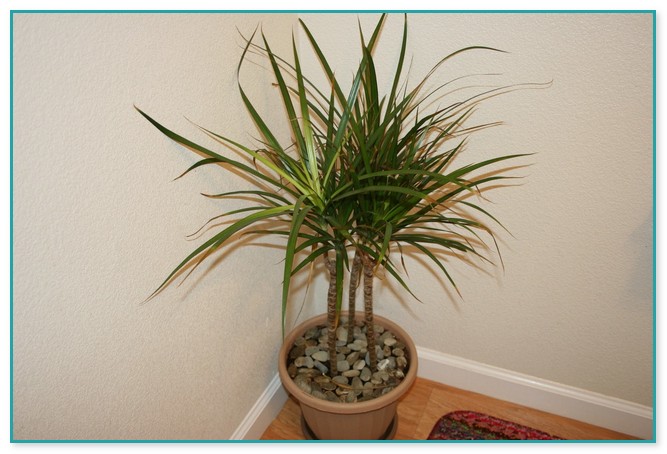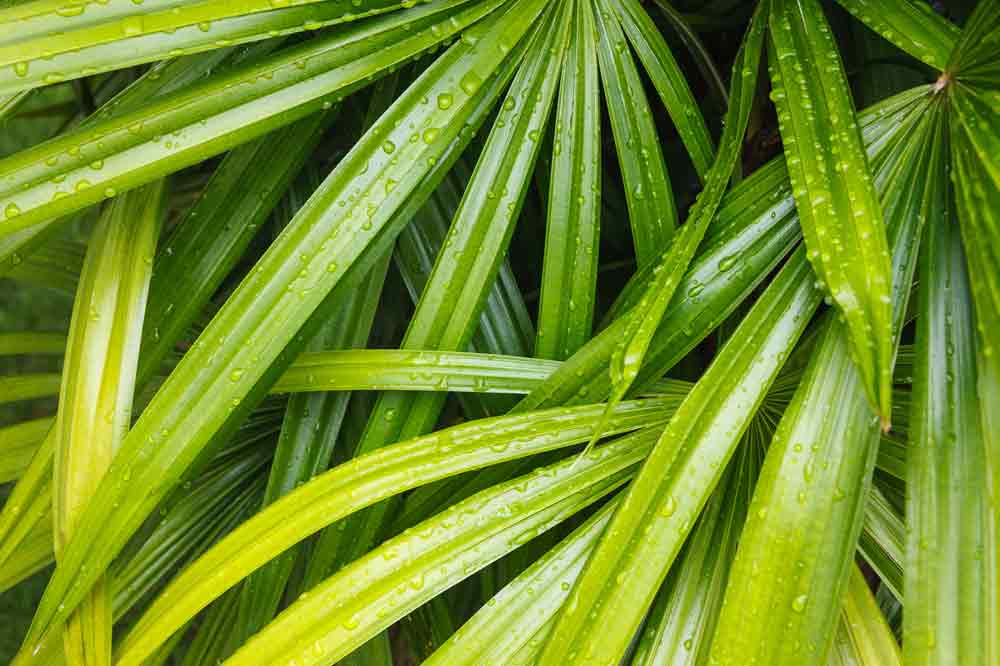Table Of Content

Few palms will thrive in truly cold temperatures, and some, like the coconut palm, cannot tolerate any cold at all. For some species, brown tips and margins are just a normal part of their life cycle, so it’s not always something you can fix. If they bother you, simply trim them off to keep your plant looking its best. Check to make sure you’re watering enough, and inspect the leaves for bugs. Use organic fertilizer rather than chemicals, and try to increase the humidity level around the plant.

Watering Indoor Palm Plants
Do this until your watering schedule is down to three or four times a week. If a palm's lower leaves turn yellow and brown, this could be a sign that it's thirsty for more water. However, be aware of drainage, because too much water can cause roots to rot. Bracing a palm typically works better than staking, because palm trunks are often smooth, causing ties to slip down the trunk.
More Indoor Plant Care Guides
This elegant palm showcases glossy fan-like fronds, it’s low maintenance and grows at a slow pace like other types of palms. While growing indoors, it usually remains around 4 to 6 feet tall. There are other types of indoor palm trees to grow as houseplants. The lady palm is an oh-so elegant houseplant with an eye-pleasing combination of green and variegated, slender fronds. This one is sure to lend loads of visual interest to your interior, and it’s blessedly easy to care for to boot.
Chinese fan palm

Potted plants can be moved indoors or outdoors as the seasons change. This palm, whether indoors or outdoors, favors shade or low light, especially for young plants. They can better adapt to sunlight if they’ve been established for 5 years or more. The yucca palm, yucca cane, or stick yucca, is native to Mexico and Central America. These plants aren’t to be confused with the Yucca aloifolia, also known as the “Spanish Bayonet” due to its razor-sharp leaves.
The bamboo palm is a decorative palm plant with bushy foliage reminiscent of growing bamboo. Clumps of slender, cane-like stems with leaves grow together, creating dense greenery. Watering is one of the most important requirements when growing palm trees. Especially during its younger years, it needs regular watering. Over-watering increases vulnerability to diseases, so make sure to watch out how much water is added by the plant.
Don’t Overwater
This small-sized indoor palm plant only grows up to 4 ft. indoors. It has beautiful crescent-shaped, light leaves and gets quite bushy. Your indoor parlor palm will most likely survive completely away from windows if that’s what your space requires - it just won’t grow very fast. Even with sunlight, the parlor palm is a slow grower, often taking years to reach its full height of 3-4 feet (1 m.) tall. The soft, cascading habit of the parlor palm plant (Chamaedorea elegans) arrests attention like no other. It is a popular subtropical plant — upright, evergreen, and spreading, capable of reaching 2 to 6 feet tall and 2 to 3 feet wide in indoor environments.
Is Ponytail Palm Toxic to Cats? Vet-Reviewed Houseplants Examined - Catster
Is Ponytail Palm Toxic to Cats? Vet-Reviewed Houseplants Examined.
Posted: Tue, 16 Jan 2024 08:00:00 GMT [source]
Points to Consider Before Growing Palms Indoors:
Place 3″ of mulch around the base to keep them moist without flooding the roots. These plants are typically sold and grown as a cluster of smaller plants, which may give them the appearance of one larger palm. They grow fairly slow and will do well in low or indirect light. An average temperature is fine for these plants but they do prefer above average humidity, which can be achieved with regular misting.
The Best Low-Light Indoor Plants - Houseplants - Martha Stewart
The Best Low-Light Indoor Plants - Houseplants.
Posted: Thu, 30 Nov 2023 08:00:00 GMT [source]
This palm plant also makes it onto the list of houseplants that purify the air. Although the plant grows in shaded light, keep humidity levels high for it to thrive. Palm trees are known for their long, slender trunks and thin fronds and are closely identified with tropical locations and warm-weather spots. However, some palm trees are actually shrubs, and some types of palms grow comfortably in cooler weather or indoors.
Yucca Palm (Yucca gigantea)
These plants can grow up to 8 to 10 feet and do best with bright, indirect light and moderate to high humidity. Be careful with these plants and always wear gloves when pruning because they can grow sharp spines on their fronds which could give you a nasty poke. They can grow quite tall, up to 40 feet, but can be kept much smaller when grown potted and indoors.
Fishtail Palms get their name from their chopped leaves that look like fishtails. They require a lot of intense light and a consistent supply of water. Soil should be moist but not muddy, and it requires indirect sun to thrive.
Also, indoor tropical palms grow slower due to dry air, less heat, and cramped roots. So, their nutrient needs are fewer than with outdoor palm trees. As with most types of indoor palm plants, the Chinese fan palm is a slow grower. Eventually, the evergreen tropical palm should reach a height of 10 ft. (3 m). It also has a wide spread, so give the plant plenty of space in a bright, airy room.
Water your indoor parlor palm sparingly - underwatering is better than overwatering. Allow the soil to begin to dry between waterings, and water even less in the winter. In this case, try to save the healthy roots by cutting off the impacted roots. Once you've transplanted the parlor palm, make sure not to overwater or you could face root rot again. Parlor palms are vulnerable to pests including aphids, mealy bugs, scale, and whitefly. Fungal leaf spots and root rot can occur from moisture issues such as overwatering.
No comments:
Post a Comment